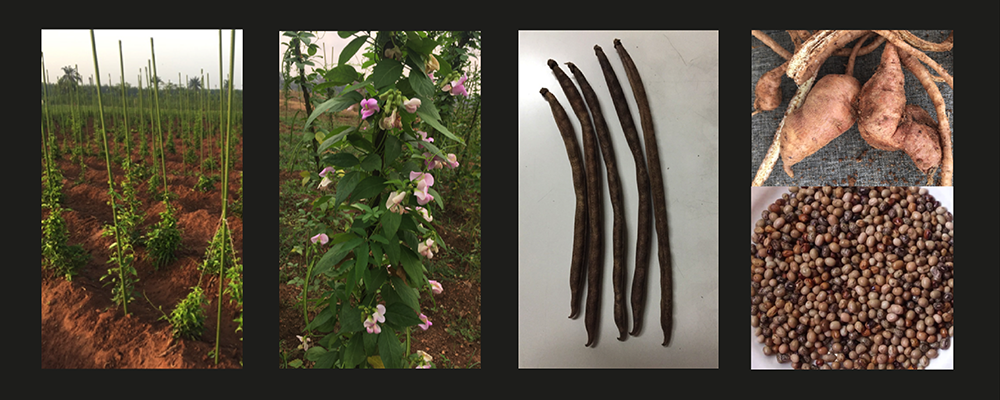Increasing the diversity of the food crops that we grow
The latest State of Food and Agriculture report by FAO calls for major changes in our agrifood system. Another recent report, State of Food Security and Nutrition in the World, also states that globally, we are not on track to achieve the United Nations Sustainable Development Goal 2: Zero Hunger by 2030.
The world’s human population consumes more than half their calories from just three crops – rice, wheat and maize. But these carbohydrate-rich crops require big resource inputs of fertilisers and water. Relying on a small number of different crops also makes the food system more susceptible to climate change and limits the diversity of nutrients provided as required in a balanced diet.
There's an urgent need to solve malnutrition for children in Africa where cassava is the staple food crop grown by poor farmers on marginal lands. Cassava contributes to about 40% of the food consumed in tropical Africa. However, cassava is very limited in nutrients, particularly protein and micronutrients like vitamin A, iron and zinc.
A lack of crop diversity also leaves us more exposed to climate change. The world’s first famine caused by climate change has already started in Madagascar where rice and cassava are the two most important food sources for the Malagasy population.
Therefore, we need to change how we grow and what we grow for sustainable, affordable, and nutritious food systems.
One of the ways to achieve this is through planting and consuming more legume crops, which are rich in protein, fibre, iron and potassium. There are hundreds of forgotten or side-lined bean crops that could be game changers for global health and food security.
Improving legume crops
Plant scientists across the world, including at the Sainsbury Laboratory, are studying how this symbiosis forms between legumes and soil bacteria. Studying plant and bacteria genomics and unravelling the molecular processes involved will help improve the quality and yield of legume crops.
Legumes also form beneficial associations with arbuscular mycorrhizal fungi that help plants access phosphorus in the soil. Understanding how both mycorrhizal and bacterial nodule symbioses are regulated could help in optimising both processes.
While high in proteins, some legumes have to be treated to remove anti-nutritional compounds before they can be eaten. Most of these compounds can be reduced by soaking or cooking the seeds, but breeding crops without these compounds is also being worked on.
The African Yam bean is a forgotten crop that holds large potential due to its ability to produce both edible seeds and tubers in drought conditions.
Forgotten crops – The African Yam Bean
Dr Nadia Radzman, Research Associate at the Sainsbury Laboratory and Co-chair of Cambridge University Food Security Society, is working on a new international research collaboration with Nigerian partners looking to re-introduce a legume crop that produces both tasty and highly nutritious beans and tubers (it produces its own chips and beans).
The African yam bean not only grows high-protein edible grains and tubers, this drought-resilient crop also replenishes the soil of nutrients and is highly adaptable to varying-climates.
Once prevalent across West and Central Africa, the African yam bean has been taken over by other commercial crops. African Yam bean also solves malnutrition problems as it is a legume and therefore higher in protein. Unfortunately, the African yam bean has been forgotten due to a westernised diet and global trends of crop homogeneity.
The African yam bean tuber has a protein content of 20% (22 - 25% in the edible beans), which makes it a superior alternative to other sources such as cassava (2%) or maize (5.4%). This is important because consumption of carbohydrate-intensive, low-protein diets causes malnutrition and stunting in 32% of children under 5 years old.
Read about how forgotten beans could help fight malnutrition.

